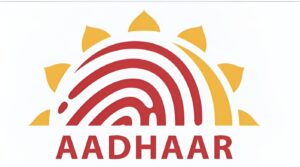In today’s time, the Aadhar Card Rule has become the most crucial identity document for every Indian citizen. Whether it’s opening a bank account or availing benefits under government schemes, the Aadhar card is required in nearly every official process. With over 140 crore Aadhar Card Rule already issued, its reach and significance are undeniable.
The growing use of Aadhar Card Rule has also led to rising incidents of fraud, with many individuals obtaining Aadhar cards using fake documents. This posed a serious threat to the country’s security system.
To address this, the Unique Identification Authority of India (UIDAI) has introduced stricter rules for issuing and updating Aadhar Card Rule in 2025. The new guidelines mandate rigorous verification, requiring valid proof of identity and address for both new applications and updates. This move aims to ensure that only genuine and verified individuals are granted Aadhar numbers, thereby strengthening the integrity of the system.
Under the newly implemented rules, obtaining or updating an Aadhar Card Rule will now involve a significantly stricter document verification process. Key documents such as the ration card, matriculation certificate, birth certificate, and passport will undergo thorough scrutiny. Additionally, supporting documents like the PAN card, MNREGA card, driving license, and electricity bill will also be carefully verified.
To streamline this process, UIDAI has introduced a specialized digital tool designed to verify the authenticity of documents by connecting with various government databases. If a document’s information is available online or publicly accessible, the tool verifies it digitally in real time. This advanced system is capable of detecting forged documents instantly, ensuring quick and accurate validation.
The use of this technology is expected to significantly enhance the reliability and security of the Aadhaar enrollment and update process, minimizing the chances of fraud and ensuring that only legitimate applicants are issued Aadhaar numbers
Enhanced Role and Responsibility of State Governments
Under the new Aadhar Card Rules, state governments will be required to take a more active role in the Aadhaar enrollment process. It will now be their responsibility to ensure that Aadhaar cards are issued only after thorough verification of each application. To facilitate this, special verification committees will be established at the state level to authenticate documents at the local level. This system will be particularly crucial in border regions, where instances of illegal migrants obtaining Aadhaar cards using fake documents have been more frequent.
State authorities will also need to integrate their databases with the UIDAI system to enable real-time cross-verification of documents. This unified approach will enhance transparency in the Aadhaar enrollment process and significantly reduce the risk of fraud. Moreover, it will play a vital role in bolstering the country’s internal security.
Among the over 140 crore Aadhaar cards issued in the country, many are found to be in the names of deceased individuals, while some people possess more than one Aadhaar card—both clear violations of UIDAI norms. There have also been instances where illegal migrants managed to obtain Aadhaar cards using forged documents. The primary objective of the newly introduced Aadhar Card Rules is to permanently resolve these issues.
To tackle duplication, UIDAI is now leveraging biometric duplication detection technology to identify and eliminate multiple Aadhaar cards issued to the same individual.
In March 2025 alone, UIDAI issued 20 lakh new Aadhaar numbers and updated 1.91 crore existing records. Despite the high volume of work, the focus has now shifted toward improving quality and accuracy. Through regular audits, suspicious Aadhaar cards are being flagged and deactivated when necessary. This ongoing process is crucial to maintaining the integrity and reliability of the nation’s demographic database.

To enhance the security and reliability of the Aadhaar system, UIDAI has implemented a cutting-edge verification mechanism powered by Artificial Intelligence (AI) and Machine Learning (ML). This advanced system is highly effective in detecting forged documents. During the scanning process itself, it can determine whether a document is genuine or fake.
The use of photo identification technology ensures that the applicant’s face matches the submitted documents, adding another layer of verification. In addition to biometric data, digital footprints are now being analyzed. This includes examining mobile number activity, social media presence, and other digital identities to confirm the applicant’s authenticity.
By integrating these modern technologies, UIDAI is working toward making Aadhaar one of the most secure and foolproof identification systems in the world.
How the New Aadhar Card Rule Affect Common Citizens
The implementation of stricter Aadhar Card Rule means that common citizens may now have to invest more time and effort in getting their Aadhaar card issued or updated. The process will require additional documents and involve deeper verification checks. While this may make the procedure slightly longer, the long-term benefits are significant. A thoroughly verified Aadhaar card will be more secure, reliable, and less prone to misuse.
Starting November 2025, citizens will be able to update details such as name, address, date of birth, gender, mobile number, and email ID directly through the official UIDAI website—provided their mobile number is linked to Aadhaar. This digital-first initiative will reduce paperwork, save time, and make the process more convenient and efficient for millions of users across the country.
Future of Aadhar Card Rule: Enhanced Security and Greater Transparency
The primary objective of the new Aadhaar rules is to enhance the system’s security, transparency, and reliability. These measures will significantly boost national security by making it much harder for illegal immigrants or suspicious individuals to create fake identities. In addition, the Aadhaar infrastructure has been fortified with advanced cybersecurity protocols. Personal data is now protected through robust encryption and secure transmission systems.
Looking ahead, Aadhaar is set to play a pivotal role not just as an identity document, but as a key enabler of the Digital India initiative. Plans to integrate blockchain technology will further strengthen the system by ensuring the immutability and integrity of Aadhaar data. Together, these advancements represent a major step forward in making Aadhaar the world’s most trusted and secure identification system.

